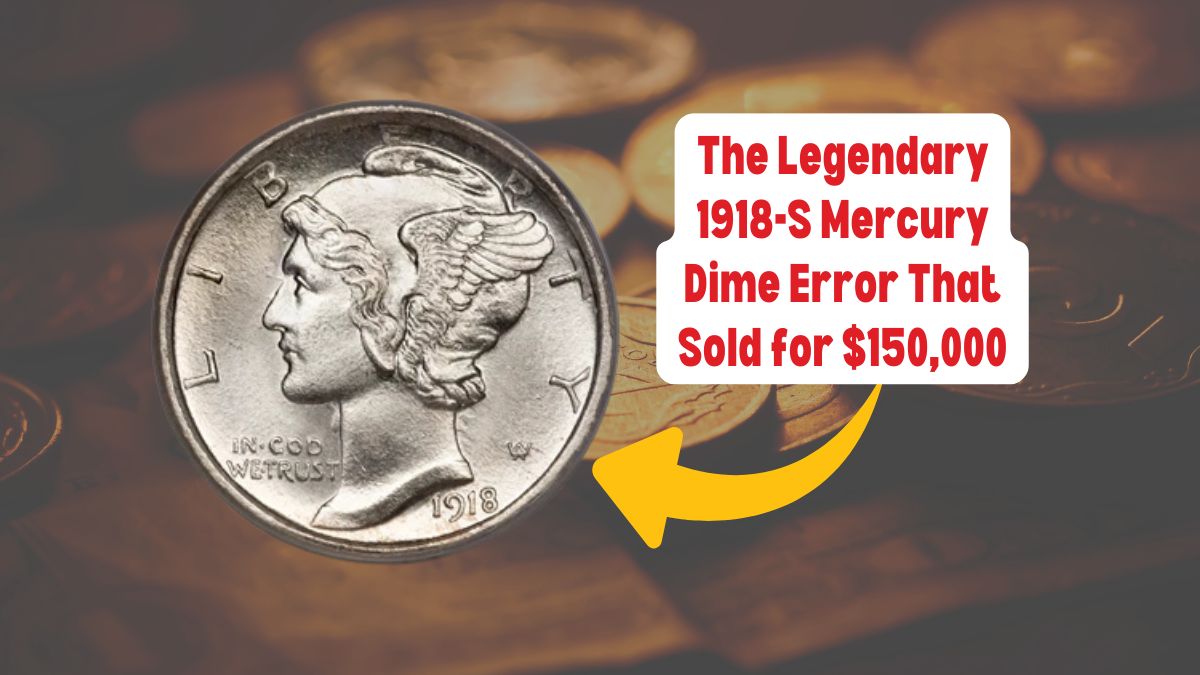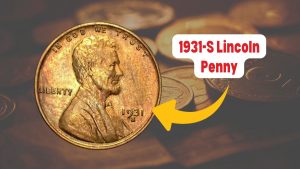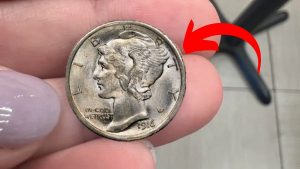In the realm of numismatics, certain coins captivate collectors due to their rarity, historical significance, and unique features. One such coin is the 1919-D Mercury Dime, which garnered significant attention when it sold for an astonishing $156,000 at a 2019 auction.
This article delves into the factors that contributed to this dime’s exceptional value, including its design, minting details, and the coveted “Full Bands” designation.
The Mercury Dime: A Brief Overview
Minted from 1916 to 1945, the Mercury Dime, officially known as the Winged Liberty Head Dime, is celebrated for its artistic design by sculptor Adolph A. Weinman. The obverse features Lady Liberty donning a winged cap, symbolizing freedom of thought.
The reverse showcases a fasces—a bundle of rods with an axe—representing strength and unity, intertwined with an olive branch signifying peace.
The 1919-D Mercury Dime: Rarity and Significance
The 1919-D Mercury Dime was minted at the Denver Mint, denoted by the ‘D’ mintmark. While nearly 10 million of these dimes were produced, most entered circulation and suffered wear, making high-grade specimens exceedingly rare. Coins that remain in mint state with sharp details are particularly sought after by collectors.
The “Full Bands” Designation
A critical factor elevating the value of certain Mercury Dimes is the “Full Bands” (FB) designation. This term refers to the horizontal bands binding the rods on the fasces on the coin’s reverse. For a dime to earn the FB designation, these bands must be fully separated and exhibit clear, distinct lines.
Achieving a full strike with complete band details was challenging, especially for coins minted in Denver in 1919, due to limitations in minting technology and quality control.
The Record-Breaking Auction
In January 2019, a 1919-D Mercury Dime with the Full Bands designation and graded Mint State 66 (MS66) by the Professional Coin Grading Service (PCGS) was sold at a Heritage Auctions event for an impressive $156,000.
This high grade indicates the coin was uncirculated and preserved in near-perfect condition, a rarity for this particular mint and year. The combination of its pristine state and the Full Bands feature significantly amplified its desirability and market value.
Factors Influencing the Dime’s Value
Several elements contributed to the extraordinary auction price of the 1919-D Mercury Dime:
- Condition (Grade): The MS66 grade signifies a coin with minimal imperfections, retaining its original luster and sharp details.
- Full Bands Designation: The presence of fully defined bands on the fasces is uncommon, especially for the 1919 Denver mintage, enhancing the coin’s appeal.
- Rarity: High-grade examples of the 1919-D Mercury Dime are scarce due to the majority being circulated and showing significant wear.
- Collector Demand: Enthusiasts of the Mercury Dime series highly prize specimens that combine rarity, exceptional condition, and distinctive features like the Full Bands.
Comparison with Other Valuable Mercury Dimes
The 1919-D Mercury Dime is among the most valuable in the series, but other notable examples include:
| Year | Mint Mark | Notable Feature | Auction Record |
|---|---|---|---|
| 1916 | D | Low mintage of 264,000 | $207,000 (Full Bands) |
| 1918 | D | Full Bands designation | $182,125 (MS67) |
| 1919 | S | Full Bands designation | $132,000 (MS66) |
The 1919-D Mercury Dime that sold for $156,000 exemplifies how a coin’s condition, rarity, and unique attributes can converge to create significant value in the numismatic market. For collectors and enthusiasts, this serves as a compelling reminder of the hidden treasures that may lie within the world of coin collecting.
FAQs
What is the significance of the “Full Bands” designation on a Mercury Dime?
The “Full Bands” designation indicates that the horizontal bands on the fasces on the coin’s reverse are fully separated and clearly defined. This feature signifies a strong strike and is relatively rare, especially in certain mint years, thereby increasing the coin’s value among collectors.
Why did the 1919-D Mercury Dime sell for such a high price?
The 1919-D Mercury Dime achieved a high auction price due to its exceptional condition (graded MS66), the rare Full Bands designation, and its scarcity in such a state. These factors combined to make it a highly desirable piece for collectors.
How can I determine if my Mercury Dime has the Full Bands feature?
To identify the Full Bands feature, examine the reverse side of the dime under magnification. Look for the horizontal bands on the fasces; if all bands are fully separated with distinct lines, the coin may qualify for the Full Bands designation. Consulting a professional grading service can provide confirmation.




